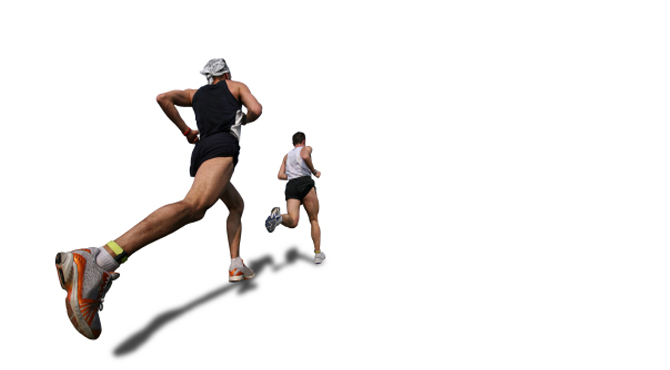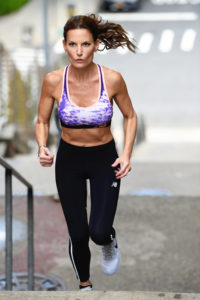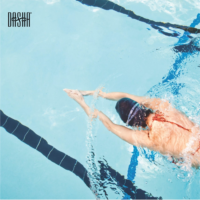It’s officially running season. With the ING NYC Marathon just under three months away, marathon runners are getting serious about their training. A twelve time marathon runner myself, I have experienced my fair share of pain, discomfort, and injury, and I have learned how important it is to be educated about the kinds of conditions runners can develop, how to avoid them, and how to treat them. In the 3 months leading up to the marathon, I will be conducting a 3 part “Running Season Series.” Each month, I will cover a prevalent runner condition. Whether you are a veteran runner or just taking it up for fun, I hope this series will help you prevent injury and make the most of your runs.
This month I will be focusing on the Achilles Tendon. The strongest, thickest tendon in your body, the Achilles connects your calf muscles to the back of the heel and is responsible for creating the force required to continually push off from the pavement as you run. If you are running distances consistently or doing incline or speed work, you may find yourself putting strain on the Achilles over time and developing a case of Achilles Tendinopathy (note: many people refer to “Achilles tendonitis,” but the more medically correct term to define the condition many runners develop is actually Achilles Tendinopathy).
According to the Journal of the Royal Society of Medicine, Achilles Tendinopathy has been on the rise over the course of the past 30 years because of “greater participation in recreational and competitive sporting activities” like marathons. And according to the Journal, runners are 10 times as likely to develop Achilles tendon injuries as their non-runner counterparts.
So what exactly is Achilles Tendinopathy, and why does it occur? What are some symptoms that you may be suffering from an Achilles injury and should see you doctor? Achilles Tendinopathy is essentially an overuse injury. The Achilles tendon is made up of fibers of protein called collagen, bound together in a rope-like structure. With Achilles Tendinopathy, the fibers become “weak and dysfunctional” and cause stiffness initially and typically sharp pain as the condition worsens into the acute stage.
What are some common symptoms that indicate you might be suffering from Achilles Tendinopathy? Normally, sufferers first note a dull ache or stiffness, particularly in the morning or at the start of an active period (in the beginning stages of the condition, the stiffness goes away as you warm up the area). There are many effective preventative treatment options if the runner takes notice and gets medical advice in this stage.
However, if the runner ignores these symptoms and continues training, (particularly with speed, incline, or distance work), the pain will become sharper. Typically, the runner will experience pain a few inches above the heel bone. Sometimes the pain occurs directly around the heel bone itself, in which case the fluid-filled sac behind the tendon, called the bursae, may also be inflamed and contributing to additional pain. As the pain increases, eventually it will prevent the runner from doing any kind of running, even jogging slowly and for short distances. At this stage, running a marathon is definitely not in your immediate future.
This is why it is so important to take preventative measures before the condition develops or worsens. If your Achilles is tight, you may be more likely to damage it when training for a marathon or increasing your runs. Stretching (try using a foam roller) is a great way to prevent injury if this is the case. It is also really important to have strength in the rest of the foot so that while running, the feet properly support the impact and force required to run; if the feet are week, the tendon can be jerked and twisted, leading to injuries. Exercises to develop strength in the foot are hence also important.
Another preventative measure that should be taken is stretching and strengthening the calf muscles and working on increasing the range of motion (ROM) in the ankles. Structurally, all of these parts of the legs and feet make a difference in proper running and in preventing any kind of tendon injury from overuse or trauma. Warming up and wearing proper, supportive running shoes are also vital. Consider placing Custom Orthotics in your shoes for even better support.
In our office, we treat someone in the initial phase of Achilles Tendinopathy with different techniques than we would someone in the acute phase. A runner who is experiencing stiffness or occasional throbbing would receive some combination of Physical Therapy, Stretching, Manual Therapies (potentially including Graston Technique or Active Release Technique), Cold Laser Therapy, and EPAT Shockwave Therapy to stimulate blood-flow and healing to the area, strengthen and stabilize the muscles of the foot, and lengthen the tendon and surrounding calf muscles.
Unfortunately, if someone is in a more acute stage of the condition, we are more limited in what we can do simply because of the pain and tenderness most sufferers feel; however, a period of rest combined with an ongoing Physical Therapy regimen to heal, rebuild, stabilize, strengthen, and lengthen the new fibers of the healing tendon would most likely be recommended to help the runner recuperate.
If Achilles tendon stiffness, discomfort, or pain is interfering with your running schedule, don’t hesitate to contact our office to make an appointment, and the earlier you do so, the better! Don’t continue training until you have visited a medical professional.
DASHA wellness & spa is a luxury lifestyle brand and New York City-based wellness center created to offer a truly holistic approach to wellness. To learn more, visit dashawellness.com.





